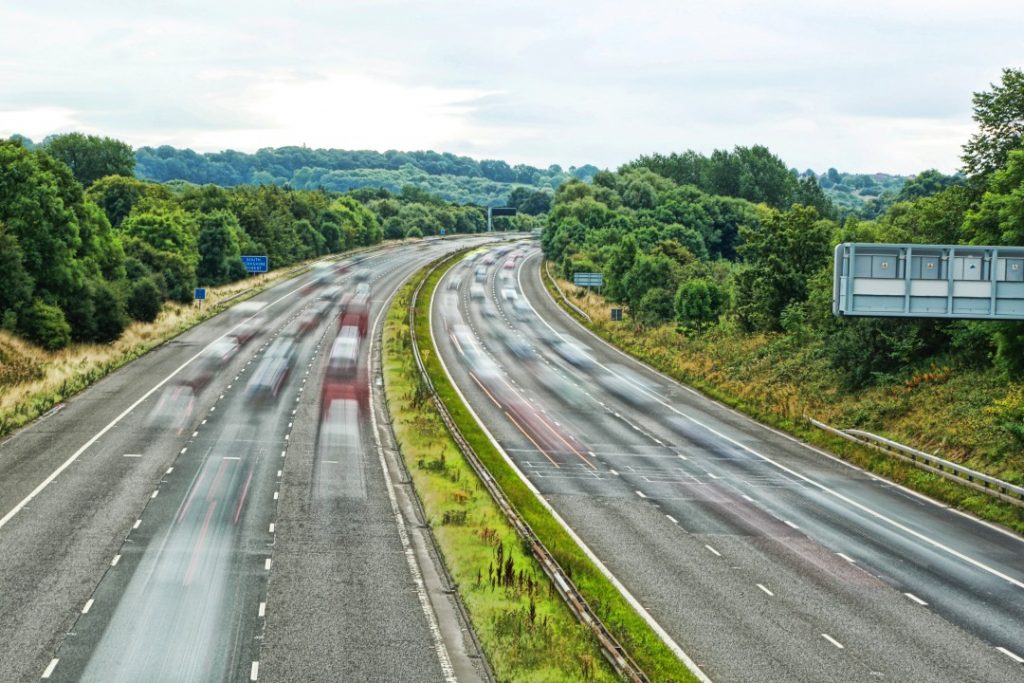Motorway infrastructure has been making the headlines over recent months, as UK drivers raise their concerns over the real safety precautions around smart motorways.
What is a smart motorway?
Smart motorways were first introduced to regulate traffic flow and ease congestion by sometimes ‘removing’ the hard shoulder. There are three main types, all using overhead gantries to direct and instruct drivers:
- Controlled: which do have a permanent hard shoulder but also use technology such as variable speed limits to adjust traffic flows
- Dynamic: where the hard shoulder can be opened at peak times and used as an extra lane and the speed limit is reduced to 60mph
- All-lane running: where the hard shoulder has been permanently removed to provide an extra lane, and emergency refuge areas are provided at regular intervals for cars that get into accidents and need recovering
Why do drivers not like smart motorways?
As smart motorways started stretching across the UK, an increase in safety related concerns came with them.
Whilst motorways in general account for fewer casualties than rural or urban roads, (even with the high speeds involved) it’s the physical removal of the hard shoulder raises the most panic amongst drivers, more so than the speed limits themselves. This is because vehicles can potentially be left stranded in a stream of fast-flowing traffic, and emergency vehicles may struggle to get through to an incident.
To drivers, this implies that the harder it is to get to a safe refuge point on a high-speed road, the more dangerous it is, and the more serious accidents will happen.
Are there plans to make smart motorways safer?
Since 2020, Highways England has made it a priority to ensure that each smart motorway has frequent emergency refuge areas (ERAs). These ERAs are coloured orange to make them more visible to drivers, and signage has also improved so that drivers can easily spot where the next emergency stop area is.
Some motorway stretches including the M3 and the M20 even have ‘radar-based stopped vehicle detection’ (SVD) and cameras across all smart motorways have been upgraded for better detection to help police officers find people driving in a closed lane.
Are there going to be anymore smart motorways?
As of January 2022, the government has confirmed it’s pausing the roll out of smart motorways to gather a full five years’ worth of safety data. This is on the basis that once the five years are up, a decision will be made on what to do about introducing more.
Transport Secretary, Grant Shapps recently commented that “we absolutely have to have these as safe or safer than regular motorways or we shouldn’t have them at all,” when speaking with BBC Panorama.
What’s more, Highways England is also investing £900 million to improve the safety of existing smart motorways, with £390 million of this set to go towards adding more ERAs.
For now, the area of focus is on the smart motorways we currently have, rather than building new ones.
What happens if I break down on a smart motorway?
For so many drivers, it’s almost impossible to get the theme tune from the Highways England Go left! campaign out of their heads.
It was launched to raise awareness of what to do when your car has a problem on a smart motorway, and also advises that if anyone experiences as break down on a smart motorway, the best option to reach an ERA as soon as possible.
Naturally, the campaign details immediate actions such as:
- switching on hazard warning lights on,
- getting out of the vehicle safely,
- and keeping well away from the vehicle and moving traffic.
But for commercial fleet operators, there’s one more very important step…
Call for breakdown recovery assistance
At Egertons, we’re one of the UK’s leading vehicle rescue and recovery operators.
Proud to offer a 24/7/365 service across the country from breakdown assistance to specialist recovery, our average attendance time is 43 minutes from leaving our sites to reaching you at the scene, making us the ideal recovery service whenever you need it most.
What’s more, our sophisticated triage process allows us to deploy the exact right vehicles to a scene first time. This is supported by our 24-hour control room, allowing us to keep an eye on the latest traffic updates and locations to ensure we reach you from anywhere, any time.
In other words, we’re ready when you are.


